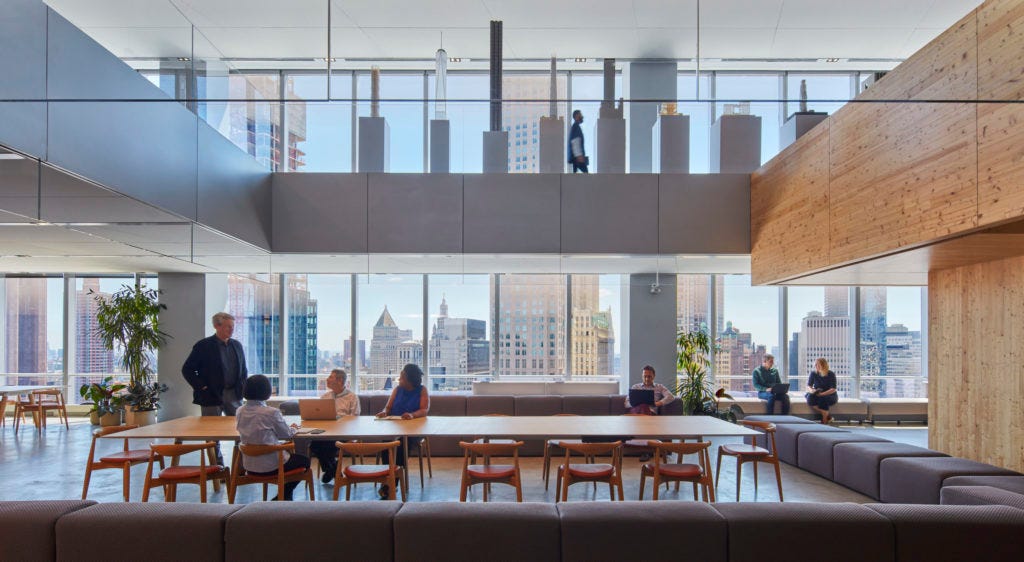Today I walked into the New York office of Skidmore, Owings & Merrill (SOM), not as an engineer this time, but as a visitor. I was escorted in by a young, talented architect, Mr. Lu, who graciously introduced me to his colleagues: architects and structural engineers who now carry on the legacy of which I was once a part.
That legacy was best described in a paragraph I read on SOM’s website. It brought me to a full stop:
“The merger of architecture and structural engineering has been SOM’s hallmark for decades. From the glass and steel facade of Lever House, completed in 1952 as the first modernist office building in New York City; to the record-breaking skyscrapers, Sears Tower and John Hancock Center, which redefined the Chicago skyline in the 1970s; to the cantilevered trusses of San Francisco International Airport, opening a gateway to the city for the new millennium; and the engineering of Burj Khalifa, which stands as the world’s tallest building, SOM continues to innovate.”
Reading that, I felt seen — by history.
Just before I left SOM in March 2000 (having joined the firm in June 1994), I had the honor of working from start to finish on that very gateway: the San Francisco International Airport International Terminal. I worked as a seismic structural engineer, focused on the seismic base isolation design and the long-span roof trusses, ensuring not only the building’s elegance but its resilience. It was an engineering feat — my architectural/engineering chapter at its peak.
The Leap
When I left SOM, it wasn’t because of burnout or dissatisfaction. Instead I felt the tremors of a new kind of disruption — one powered not by tectonics but by technology. The internet was rewriting everything, and I couldn’t ignore its pull. So I pivoted to Silicon Valley, swapped load-bearing equations for database distributed systems, and spent two decades building the invisible architecture of the cloud.
I immersed myself in technology, into a world where structure meant code, where systems lived in the cloud, and where the pace felt like a sprint with no blueprint.
It was a seismic shift in every sense (to me).
Now, as I reflect back, retired early and entering a new chapter with koffeemocha, I find myself wondering:
What if I had stayed?
A Mirror at SOM NY
The visit to SOM’s New York office gave me a mirror, not of glass, but of memory.
Watching young architects and engineers at work reminded me of who I once was: a 30-something filled with ambition, humility, and a curiosity about how things stand.
Their tools have evolved, their workflows digitized, and their sketches now rotate in 3D.
The spirit? It’s the same as it was 30 years ago, as a prestige AE powerhouse should be.
Rigor. Rhythm. Hope.
And maybe a little restlessness too.
As a SOM old-timer, I felt like we had grown up together, and wanted to say,
“We are standing in a studio that has shaped skylines, and minds.”
From Roof Trusses to Soul Frameworks
At koffeemocha, I no longer literally design terminals, but I do support people navigate life transitions, especially in this era where AI is becoming an unexpected collaborator… and beyond.
I use my experience to support others in building something just as complex:
A meaningful, adaptive life.
And it turns out that the seismic base isolation practiced in my SOM era is a great metaphor for transition.
Sometimes, we don’t resist the shift, we design for it.
We allow movement. We stay grounded, but flexible.
To the Next Generation
If you’re a young architect, engineer, or creative reading this, here’s what I’d say:
Don’t fear the pivot. Fear the stagnation.
Your craft will always evolve, but so will you.
The question is: will your design principles apply to your life as well?
Because sometimes, the greatest project you’ll ever take on isn’t a building… It’s the reconstruction of yourself.
With respect and in reflection,
Kefei (Koffeemocha)
👉 Hit reply, I’d love to hear your trail not taken.




